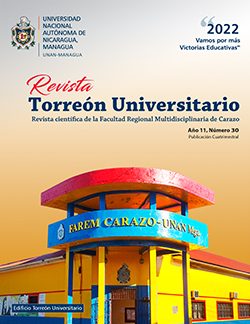Proposal for physical valuation of buildings in real estate appraisals, implication of the project factor in Mexico
DOI:
https://doi.org/10.5377/rtu.v11i30.13428Keywords:
physical valuation, project factor, real estate appraisalAbstract
The project factor complemented the value given to a house analyzed in real estate appraisals. In this work, the design of the functional analysis methodology of the rooms that make up each dwelling was presented, in combination with the Ross-Heidecke physical depreciation approach. The architectural plans of samples of houses in Mexico of all socioeconomic categories were measured and three types of matrices were established for their valuation and percentage parameters. The main type of construction was analyzed under the analysis scheme by building items and the rest of the types were examined in a unitary manner. The percentage results of the sampling analysis were directed to matrices of physical focus and as a whole; with the qualification factor of the state of conservation of each building item, with the calculation of a project factor appropriate to each type of dwelling. The automated analysis, which qualified the value of the buildings based on the functionality of each architectural project, complemented the study of physical depreciation. The resulting percentages of the sample, calculated how much each room measures in the logic of a simulation, which according to the total building area and the specific number of rooms, classified the functionality to unit surfaces. It was emphasized that the functionality analysis includes the qualification of facilities and infrastructure. The result of the functionality factor of the architectural project was subject to the parameters and requirements of residential building codes in Mexico.
Downloads
References
Artavia Jiménez, D. A. (2012). Los modelos de depreciación aplicados en la valuación de bienes inmuebles.
Diario Oficial de la Federación, Sociedad Hipotecaria Federal. (24 de Febrero de 2012). Criterios generales para la realización y certificación de avalúos. México, Distrito Federal, México. Recuperado el 2018, de http://dof.gob.mx/nota_detalle.php?codigo=5235316&fecha=24/02/2012
Gobierno Federal Mexicano. (2010). Código de Edificacion de Vivienda CONAVI. México.
Gobierno Federal Mexicano. (2017). Código de Edificación de Vivienda CONAVI. México.
López, M. (2011). Tesis para obtener el grado de Maestro en Valuación inmobiliaria e industrial, “Metodología para estimar la edad física justa de casas habitación remodeladas”. Porcentajes representativos de partidas y clasificaciones de tipos de construcción .
Varela, A. (2000). Ingeniería de costos de construcción. México, D.F.
Varela, A. (2019). Ingeniería de Costos. Obtenido de https://www.varela.com.mx/
Villa Zamora, H. M. (2006). Tesis que para obtener el título de Maestro en Valuación Inmobiliaria e Industrial "Análisis del costo paramétrico y calculo del factor homologación por superficie de construcción para inmuebles de uso habitacional unifamiliar. Obtenido de https://infonavit.janium.net/janium/TESIS/Maestria/Villa_Zamora_Honorato_Martin_45445.pdf
Published
How to Cite
Issue
Section
License
Copyright (c) 2022 National Autonomous University of Nicaragua, Managua (UNAN-Managua).

This work is licensed under a Creative Commons Attribution-NonCommercial-NoDerivatives 4.0 International License.
The authors who publish in this journal agree to the following terms.
- The author or authors of the articles, essays or research grant the National Autonomous University of Nicaragua, Managua (UNAN-Managua) the editing rights (copyright) of the submitted work, therefore the University has the exclusive right to publish the article for the entire copyright period.
- These copyrights/authors authorize Torreón Universitario Magazine and the University to edit and disseminate/publish the article in said Magazine, including printed and electronic reproduction, storage, retrieval and any other type of publication, and sources of secondary information as services. of summaries and databases, they also empower it to protect the article against unauthorized use for dissemination by printed or electronic media (PDF, HTML, EPUB, XML or others).
License for use of content
The magazine uses the Creative Commons Attribution-NonCommercial-NoDerivs 4.0 International License.
Under this statement:

This journal is licensed under a Creative Commons Attribution-NonCommercial-NoDerivatives 4.0 International License. It can be copied, distributed and transmitted publicly as long as the author and source are cited (Revista Torreón Universitario), it should not be modified or used for any commercial purpose. The full license can be found at http://creativecommons.org/licenses/by-nc-nd/4.0/.



